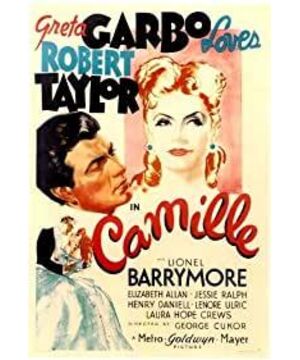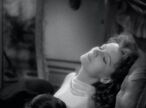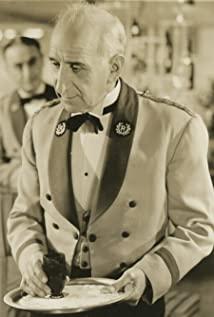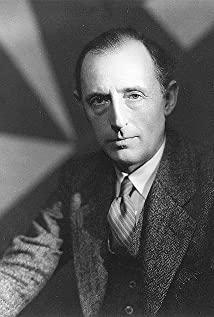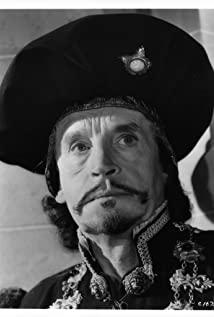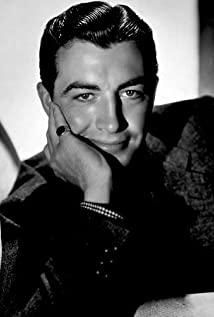The screenwriter of the film cut the plots of the original novel from the complicated ones, and condensed the grievances that took place in more than a year into a 108-minute screen story. The adaptor changed the first-person diary-style flashback format of the original work, deleted many of the original author’s personal feelings, linearly and straightforwardly narrated the love tragedy of Marguerite and Amon, and brought down the adaptor’s anger and anxiety towards society. And the dialogue with society appeals to the picture. At that time, the film hadn't completely got rid of the influence of the drama, "La Traviata" was presented to the audience with the character and form of the film. The artistic skill displayed by the director and screenwriter cannot be ignored.
The original author and the adaptor adopt an attitude of exploring the relationship between man and society, and the works naturally reflect the author's subjective mood. "La Traviata" is a realist work. It does not rely on listing details to replace the overall reality of life, but uses typical people and things to convey the social realistic meaning of the work. While caring about social life, it pays attention to The character's inner feelings are digging and exploring the foundation of life. It can be said that the author's personal feelings and a certain social spirit are intertwined in the body of the La Traviata. The vision held by the creators is honest and humble. They believe in the facts they see without being constrained by general social prejudices. In this way, the work has a penetrating power, which can grasp the fact that it has not been discovered by the world or cannot be discovered. The real quality of the society faced. In the eyes of the audience, the world is a bit more real.
The Camellia girl is a dream in her own right. Her lifestyle is drunkenness, life and death. She wanders among many suitors, exchanging her smile, beauty and body for a gorgeous and noble appearance. Under the Balenician atmosphere at the time, she didn’t need to take into account people’s opinions and evaluations of prostitutes, and she didn’t have to be ashamed of her behavior, because she didn’t give affection, and she didn’t meet a man who gave her true affection until she met Ah. mango.
Marguerite is an aesthetist. She loves camellia and beautiful clothes, but she has not found the value of her own existence. Amang's sincerity and Amang's devotion to her made her realize the value of life and the weight of love. Just when she loved Amon wholeheartedly and was ready to embrace life and the future with everything she had, another kind of love represented by Mr. Duval strongly impacted her. Under the indisputable and righteous form of paternal love, her love for Amon became weak. For the marriage of Mr. Duval's daughter, for the good future of her beloved, and for the reputation of their family, she gave up the attachment to Amon and the happiness she might get. Just when Amon accused her of being a mean and mean woman, Marguerite's human beauty and personality power were fully embodied. Margaret's pursuit of an ideal life is a dream after all, but people are often unconscious in dreams, perhaps happiness, and dreams are exactly the shattered ideals and cruel reality when they wake up. This is the sorrow that mankind has struggled for a long time and is hard to break free.
Because Baron Faville has the title and wealth, his personality is correspondingly noble. He can enjoy the happiness of family, while looking for flowers and willows grandiosely and is not despised by the world because of this. He went to see Margaret every day, and when faced with her perfunctory treatment of him, he was not bored, but thought it was the glory brought to him by his noble status. Isn't this a kind of incomplete personality? Compared with a prostitute, he lived unreal, until he thought that his personality was insulted and proposed to fight Amon, the hypocrisy of the bourgeois morality he represented was revealed. What people finally accept is the frank and thorough life of La Traviata. The prostitute itself is certainly not commendable. When Margaret appeared as a prostitute, no one ridiculed her, even though she had made some men bankrupt; but when she wanted to face the world as a good woman, she felt that she was a better life. It's harder to be a prostitute. La Traviata is a kind-hearted woman. As soon as she fell into the dust, she was involved in the deformed men circle dominated by the bourgeoisie and high-ranking nobles represented by Paris in the 19th century, and within a few rounds of fighting with society, she sent herself to the tomb. . Her death challenged the orthodox personality.
In the long river of human history, people are always fighting and dealing with society. It is in this kind of dealings and struggles that society tends to become sound and progress, and the value of human existence can be reflected. Imagine if Margaret did not meet Amon, if she did not obey Mr. Duval's orders and requests, how could she embody the beauty of her humanity and the power of her personality? Margaret's dealings with fate and society set off the living conditions of people in bourgeois society. Can this tragic force be regarded as the spiritual core and vitality of "La Traviata"?
"La Traviata" uses the screen as a carrier to raise the issue of moral right and wrong. This moral right and wrong is based on the life background of the time and longer than that at that time. It is also the judgment of the creator's subjective mind on the objective reality. Between Louis and the prostitute Margaret, Mr. Duval chose happiness for his daughter, which was based on social morality and general moral tendencies. No one cares whether prostitutes are happy, and no one cares whether prostitutes should have happiness, because the group of prostitutes is disgusted and despised by social morals. In "La Traviata", a prostitute’s pursuit of happiness is strangled out of moral need, to strangle the innocent love between Amon and Marguerite, a pair of handsome men and beautiful women, and at the cost of their lives. In an aesthetic sense, the audience cannot agree with this strangulation. The aesthetic vision of art and the vision of social morality coexist in "La Traviata", and both may be reasonable. This is the artistic charm of "La Traviata". Morality and immorality, humanity and inhumanity, beauty and ugliness, justice and injustice were confused by the decadent capitalist world of Paris in the 19th century. Marguerite’s death may cause a tremor in Mr. Duval’s heart. What kind of attitude does the social forces represented by Mr. Duval hold towards the price Marguerite paid for love? This is again the "La Traviata" proposed to the world. The problem.
"La Traviata" as a film still has many shortcomings, but as the protagonist, Greta Garbo, the actor of La Traviata, is extremely praised by the world. The advent of the novel "La Traviata", people remember Dumas and his Margaret, and the unforgettable one in the movie "La Traviata" is Greta Garbo. From sitting in a carriage picking up camellia at the beginning of the film, to appearing swiftly and lightly in the lobby of the Opera House, to tolerating a prostitute who robbed her of the limelight, Garbo took the lead and told the audience with her noble temperament: this Marguerite Gautier should not be taken lightly.
As an actor, Garbo's most competent place lies in her ability to integrate herself and the role to the greatest extent. Marguerite's prototype may have something mundane and vulgar, but this is not obvious to Garbo, who is the La Traviata. While Garbo understands and tries his best to express the vicissitudes of the vicissitudes of life and the cynicism of the women, they do not agree with their mediocrity. Therefore, the audience always feels a certain noble and melancholic temperament exuding from Garbo's Marguerite. , Margaret also appeared to be particularly beautiful and refined and lovable. While admiring Garbo-Marguerite, the audience unknowingly shortened the distance with the La Traviata and paid attention to her fate, sympathizing with her encounters and misfortunes. It is not difficult to see that Garbo has embodied her identity of her own character in her character, and has integrated her life experience and consciousness into her shaping of La Traviata. She allows the audience to see and feel this Marg Litte is so different from what was described in previous literary works, or from the prostitutes people usually think of. It is Garbo who complements and enriches Marguerite's personality and personal touch.
There is a great distance between Margaret’s social status and her inner world and self-esteem. Margaret’s desire to make up for this strong contrast and contradictory mentality is bound to be reflected in her behavior. Garbo is understanding and When portraying this kind of contrast on Margaret, her body movements and facial expressions are exaggerated. In the film, Garbo has repeatedly used the movements of leaning back greatly and head backwards, such as expressing her indulgence during carnivals. For the first time, Amon kissed her and expressed his love for her, but she did not When she was cynical, she used this exaggerated action, which was not seen in her previous films. The audience can see that it took a lot of thought for Garbo to design Margaret's body movements. When he made his debut, Garbo entered the field in quick and small steps, which was in sharp contrast to the swaggering gait of Olympe and others pulling their dresses and twisting their waists. Both prostitutes, the former looks elegant, the latter reveals vulgarity, Marguerite is naturally better. When he returned to the Baron and met Amon unexpectedly, Marguerite hesitated, and then dropped the fan. Garbo used these meticulous movements to express Marguerite’s nervousness, hesitation and hesitation. embarrassment. And in Margaret’s luxurious bedroom, she was reclining on a recliner, with her head tilted back and her arms hanging casually, with a lazy look, indicating that she was a respectable and idle prostitute. . When Mr. Duval asked her to leave his son, the action designed by Garbo was that Marguerite knelt down the table, with her arms on the table and her head hanging weakly. At this time, she was so helpless. , Helpless, hopeless, people can't help but feel sympathy. Especially unforgettable is the last scene. Before she died, Margaret heard that Amon was coming, and struggling to get Nanni to help her out of bed. She panted and coughed painfully. He only adjusted his unkempt hair with his hands that did not make his way, and he still put camellia on his waist. Every movement of Garbo seemed to be at the expense of life. When she saw Amang, because she was unable to move, she almost threw herself into Amon's arms. One showed that Margaret was dying, and the other showed her longing for her sweetheart. This series of expressive actions by Garbo comes from her full heart, full self, and from her unique temperament. This not only makes the Marguerite on the screen unique, but also forms the unique personality of Garbo-Marguerite. This kind of temperament is far from being imitated and solved by acting skills alone.
Garbo's expression in "La Traviata" is the richest and most daring. Here is just a smile. When she took the Camellia in the carriage, her smile was graceful and graceful; in the face of the quarrel between Olymp and Prudence who were arguing with her, her light smile was forgiving; she mistakenly took Ah in the box for the first time. When Mang was a baron, the smile she showed was courteous and slightly apologetic; when she was with the baron, she piled up a perfunctory, professional smile; she played the piano with the baron, and heard that Amang La When the doorbell rang, her laughter was self-deprecating and sophisticated; when asking for money from the baron, her laughter was helpless and implied humiliation; when she reveled with friends, she expressed joy, indulgence, Laughing dissolutely; seeing Amang’s sincere care after the illness, she showed a surprised and grateful smile; after coming to the country house, her face was filled with a smile of inner satisfaction for the first time; strolling with Amang On the farmland in the fields, what we saw was a smiling face of youthful vibrancy after being reborn; after Amon proposed to her, she returned him with a smile of surprise, gratitude, and happiness full of longing for the future; with the countryside When the neighbors played, she laughed innocently and unpretentiously; when Mr. Duval visited, Garbo showed a respectful, polite and uneasy laugh; when Mr. Duval left to see Amon, she There was a cynical and ruthless sneer; when the dying Margaret saw Amon, her haggard and lifeless look was a twisted smirk that looked back, longing for life and love. This kind of laughter constitutes the psychological trajectory of Garbo's shaping of Marguerite. The La Traviata left to the audience is a three-dimensional image of flesh and blood, sentimentality and righteousness, and lingering after viewing. Margaret's success embodies Garbo's understanding, accumulation, experience and integration of life, society, and roles, reaching the most shining peak of her performing arts.
View more about Camille reviews


